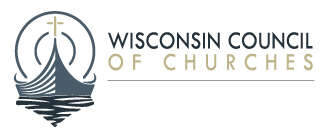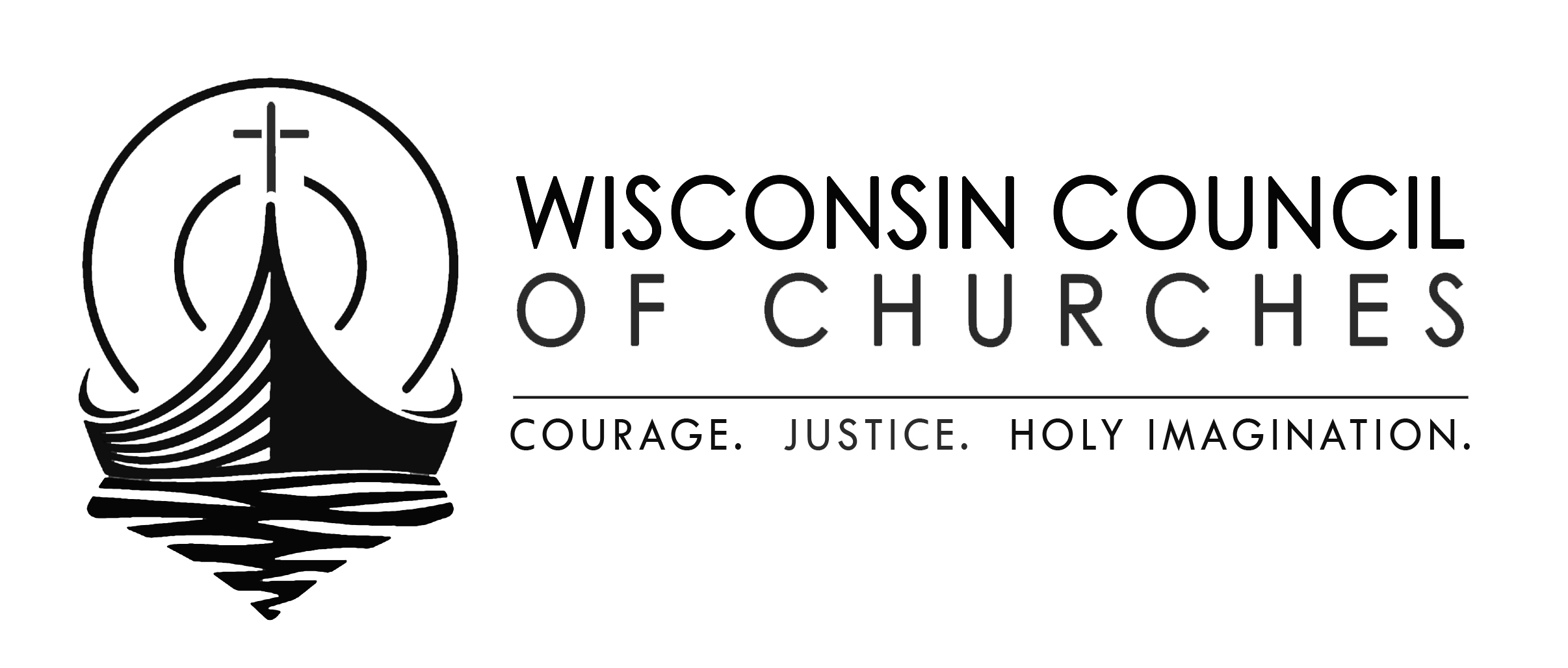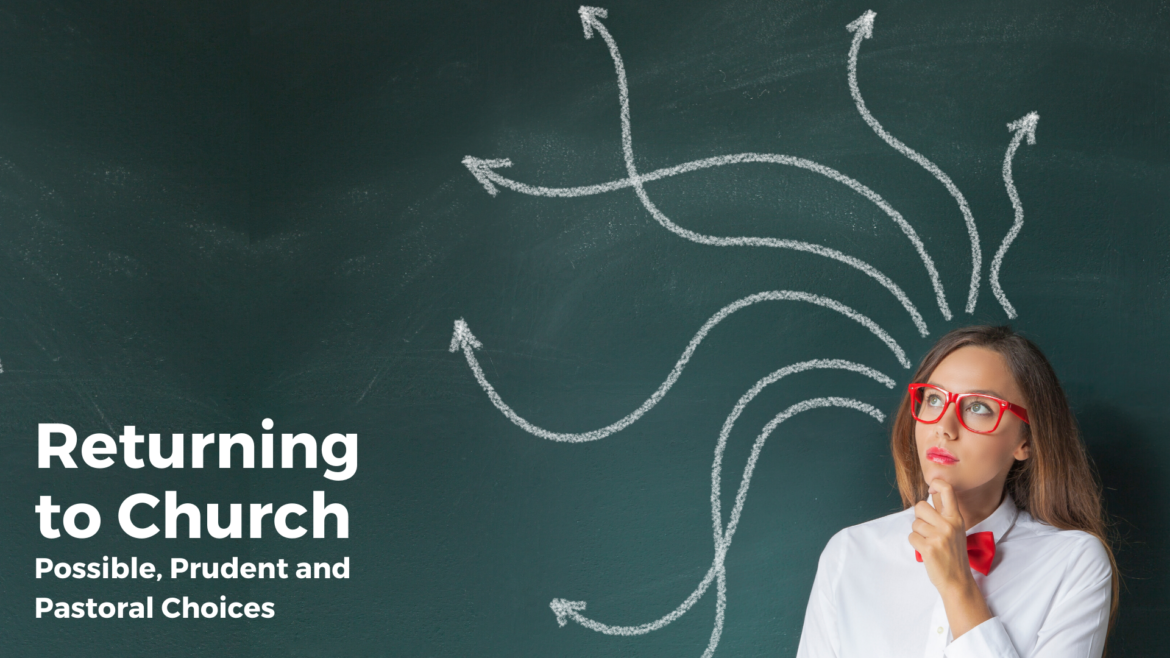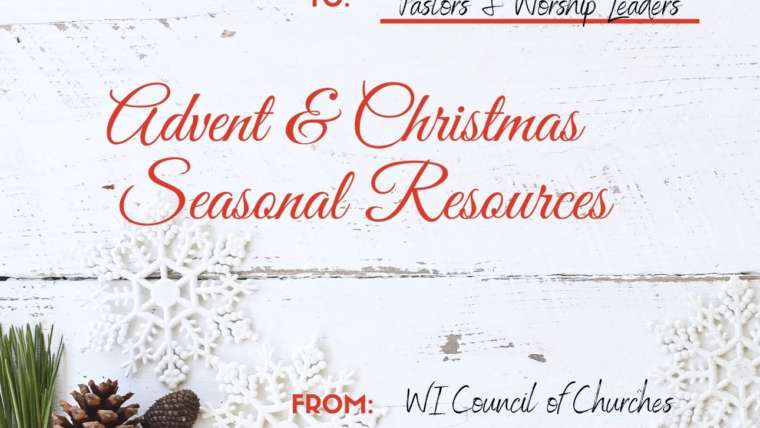RETURNING TO CHURCH: Possible, Prudent and Pastoral Choices[1]
Released 6/12/2020
In the wake of the Wisconsin Supreme Court decision in Legislature v Palm, there have been many questions from church leaders about how to assess for relative safety of returning to gathering in physical space – either outdoors or in our church buildings – given the realities of the COVID-19 epidemic and the lack of a statewide plan.
We offer this guide to assist faith communities seeking reasonable benchmarks for their own leadership decisions, in the absence of external authorities setting firm guidance. In all cases, we urge you to follow the most cautious rules or guidelines available to you: whether those are federal/state/local government authorities, ecclesiastical authorities, the decision-making body of your local church, or your personal conscience. Your re-entry plan should factor in the needs of the most vulnerable and most isolated of the community, the logistical concerns of following your established plan, and the care and safety of your staff. It is also wise to consult your insurance company for their guidance.
These recommendations have been set following consultation with our public health advisers and after listening to the questions of many churches in Wisconsin and beyond. We rely upon a framework of possible, prudent, and pastoral as we consult with faith leaders. What is legally or practically possible for us, may not always be prudent. Even once it is prudent, the available option may or may not be a pastoral choice.
Before leaping into what is possible, take some time to consider whether it is a prudent and/or pastoral choice. Ensure that you have a careful plan in place for how you will implement your gatherings – whether staff, volunteer, community ministry, small group, or wider assembly. If you have not already, we recommend that you convene a re-gathering team so the burden of planning and decision-making does not rest solely on one person.
The following pages contain a decision tree and a set of answers to frequently asked questions. Council staff has been consulting with churches statewide and we’ll be glad to answer questions by email or telephone.
Decision Tree
Monitor the “gating criteria” at dhs.wisconsin.gov/covid-19/prepare.htm.
The phasing below is aligned with the Badger Bounce Back. Your municipality or county may have a different phasing. Please review the source documents if there are any questions.
- Ideally, we would wait until all indicators are green, to go to plans for “Phase One” of return. See our recommendations in Returning to Church, or your judicatory, county or municipal guidance.[2] We know there are many factors to consider, including mental, emotional and spiritual health, which may lead you to a different choice. If you choose to advance to gathering in person while some indicators are still red, we urge you to consider the less risky options available to you: meeting outdoors/increasing airflow, beginning with smaller groups rather than the entire assembly, gathering for short lengths of time, wearing cloth face coverings, and keeping at least 6 foot distance between households. Ensure you have a plan for sanitation, physical distancing, and re-evaluating your choices based on local conditions.
- Because indicators of viral spread have a time lag, wait for three weeks before going to “Phase Two.” It takes time for infected people to show symptoms, to seek medical attention, receive test results, and begin to impact the medical system. Additional rounds of infection will begin to become apparent after several weeks. Do not go to Phase 2 if the gating criteria deteriorate in those three weeks.
- Likewise – once you have moved from Phase Two, wait another three weeks. Do not move to Phase 3 if any of the gating criteria deteriorate those three weeks.
- Be willing to move backwards in your phased plan if conditions deteriorate substantially.
This decision tree does not guarantee safety or health for those you serve, but it does represent a way to monitor external indicators; to be watchful, prudent leaders and not rely on hunches.
What if?
- Q: Do we really need to tell our elders and vulnerable people to stay home? And the people who live with them?
A: The risk to older members of the population when they contract COVID-19 is of a significantly more severe course of illness with more complications and a higher risk of hospitalization and death. We know of similar risks for people with common health conditions like high blood pressure, diabetes, and others that reduce their immune response. People who live with them, and those who care for them, can bring the virus into the home. It is important to realize that many members of your community will have good reason to stay away from crowds for a substantial period of time. Out of love for these members, and a commitment to accessibility, we not only urge you to continue to provide remote ministries on an ongoing basis, but also consider how you might continue to normalize large group ministries gathering online for the longest time possible, and only smaller groups gathering in person, to minimize risk. - Q: My church has already moved to Phase 1, but the gating criteria aren’t green yet!
A: Phase One allows for gathering of up to 10 people. Stay at Phase 1 until everything is green/improving, and wait another three weeks before deciding whether or not to advance to the next phase. - Q: We’re all the way at Phase 2. What should we do?
A: Phase 2 allows for gatherings of up to 50. Our public health advisers recommend going back to Phase 1 if possible. If that is not feasible, please stay at Phase 2 until all criteria are green/improving and stay there for a minimum of three weeks before evaluating what to do next. - Q: What we are doing aligns with Phase 3 (unlimited gatherings, social distancing only for those at high risk).
A: Current conditions do not warrant public gatherings at this size. Please strongly consider going back to Phase 1 if possible (or Phase 2 if you cannot see returning to Phase 1) and stay there until all the gating criteria are green/improving for 3 weeks. Then consider slowly stepping back up. - Q: We’d like to start with outdoor worship. Is that safer?
A: Outdoor worship represents a trade-off. You gain from better airflow and more ability to spread out. You do lose the assistance of sanctuary furniture to help you manage people and proximity. Make sure you have a plan for maintaining 6+ foot physical distancing, wearing cloth face coverings, and who will help ensure it is followed. A shorter time together is better than longer, and please refrain from singing for safety’s sake. - Q: Is drive-in worship an option?
A: Drive-in worship does help with physical distancing. The best recommendations of our advisers are that we maintain one empty spot between cars and avoid visiting between cars. If you can’t keep an empty spot between cars, make sure that everyone is masked or that car windows are closed, so there is at least a 6-foot distance between people. (As seasons pass and it gets progressively warmer, closed windows could present a safety concern unless you meet very early in the day.) A shorter time together is better than longer, and please refrain from singing. - Q: Our church is in a rural area without many cases of COVID-19. Do we really need to be this cautious?
A: You have the built-in benefit of the ability to physically distance, fresh air, and plenty of room to spread out, which is a gift! However, there are additional challenges of more limited access to medical facilities, and the exponential growth of this virus. While for a long time it might seem like there is not a major problem, exponential growth means the situation can quickly transform from looking like it is low-level and manageable to extreme in numbers. The low number of cases you have is in part a result of your success in being protective. Please keep up the good work! - Q: What if people refuse to wear a mask?
A: Some communities have established covenants, which all participants agree to, as a condition of participating in public worship in person.[3] These covenants include such items as the commitment to wear masks when coming to the building, not coming if you feel even the least bit unwell, and committing to frequent handwashing. It is no less a part of creating a safe atmosphere than “Safe Church” plans that many churches have established to protect children and vulnerable adults. It reasonable to expect this of one another.
This document was developed by Wisconsin Council of Churches staff with input from religious leaders, local church pastors, and public health experts. This is not a formal policy statement of the Council. We recommend that you consult your ecclesiastical authorities and insurance providers for final guidance. Released 6/12/2020.
[1] This document is a supplement to “Returning to Church,” which can be accessed online at wichurches.org. We also recommend that you consult “Church Music in the Age of COVID-19.”
[2] https://www.wichurches.org/2020/04/23/returning-to-church/
[3] Sample from First UMC of Grand Prairie, TX
Download a PDF version of this document
Have you appreciated or benefited from our crisis response ministry with respect to the coronavirus? Please share a word of testimony, or make a donation to sustain this work, which is helping clergy and churches here in Wisconsin, and across the nation.





1 Comment
Comments are closed.